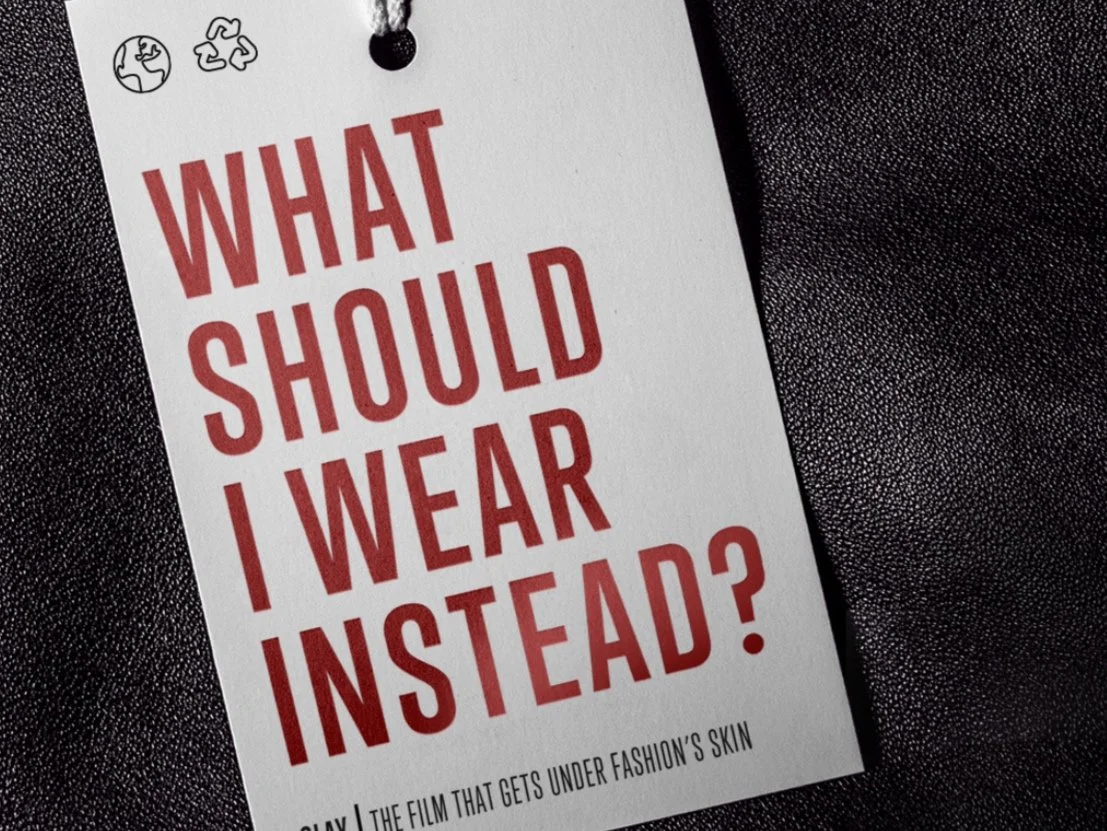SLAY
The film that gets under fashion’s skin
Before watching SLAY,
only 37% of fashion students felt it was unacceptable to use animal skins for fashion.
After watching SLAY,
93% of these students felt it was unacceptable to use animal skins for fashion.

SLAY is a feature documentary film exploring the interwoven harms caused by fashion’s use of fur, leather and wool.
Following investigative filmmaker Rebecca Cappelli as she travels the world uncovering some of fashion’s best kept secrets,
a harrowing story of greenwashing, environmental destruction, unjust treatment of workers, and animal exploitation unravels.
SLAY asks an important question to the public, and the fashion industry itself: Is it acceptable to kill animals for fashion?
Featuring prominent thought leaders and experts across the fashion design, sustainability and animal protection spaces, SLAY’s investigative work is interwoven with interviews from Bandana Tewari (former editor-at-large at Vogue India, sustainable fashion advocate), Samata Pattinson (CEO of Red Carpet Green Dress), Dana Thomas (Vogue UK’s European Sustainability Editor), Joshua Katcher (Brave Gentleman designer, Fashion Animals Author and CFJ board member), Lucy Watson (TV personality and influencer), Ed Winters (aka Earthling Ed, author and educator), Dr Melanie Joy (social psychologist and author), Emma Hakansson (Collective Fashion Justice founding director and author), Pei Su (Chinese sociologist and founder ACTAsia) Alexi Lubomirski (renowned international fashion photographer), Will Potter (investigative journalist and author) and more.
Take action after seeing SLAY
-
#WhatShouldIWearInstead
When moving beyond animal skins and wool, it’s important we ask ‘what should I wear instead?’.
Tag your favourite brand on social media, and share that while you love their designs, you want to know what total ethics alternatives to animal materials they are shifting towards, and why this matters to you.
By asking this question to ourselves and our communities we can start discussions about clothing care and making better choices, too.

-
Help create a fur free fashion industry
Fur will be the first of fashion’s animal-derived materials to be totally transitioned beyond, and we can all play our part to speed up this process.
European citizens are encouraged to sign in support of a Fur Free Europe, while those outside of the EU are encouraged to contact their local elected official to discuss the importance of a ban on fur farming and fur product sales.
We can change the fashion industry when we use our collective voices.

-
Learn more about animal-derived materials
Ducks, geese, goats, rabbits, crocodiles, ostriches, peacocks, kangaroos, moths, snakes, lizards and numerous other animal species also suffer in the fashion industry.
Learn more about how these animals are exploited for fashion, how this impacts our planet, and how we can shift beyond such needless cruelty.
Collective Fashion Justice has a wide range of resources for people to learn from, both at an entry-level, and with more depth, too.

Collective Fashion Justice’s involvement in SLAY
-

Research and data
Alongside director Rebecca Cappelli and a research team, whose work was checked by an additional legal and fact-checking team, CFJ members were heavily involved with research and data collection for SLAY. Some of Collective Fashion Justice’s verified environmental impact calculations were featured in the film, too.
-

Line-production
Collective Fashion Justice contributed some footage to SLAY, while our founder worked as line-producer in Australia, where the wool segment of the film was produced and filmed. Wool farms, scouring facilities, sheep skin tanneries, industry and lamb care interviews were all a part of the Australian segment featured.
-

Joshua Katcher interview
CFJ board member Joshua Katcher features throughout SLAY, speaking to the ways in which animals are commodified for fashion, the environmental impacts of this, and how the industry works to hide this reality. Katcher has been a leading voice in the space exploring fashion’s use of animals for many years now.
-

Emma Hakansson interview
In SLAY, CFJ’s founding director Emma Hakansson is the key expert interviewed on the environmental issues associated with wool, which are explored further in our report. She also features in the rescue of Foggy, a lamb left to die of hypothermia on a wool farm in Australia, found nearby other recently deceased lambs.
-
Campaigning and industry engagement
Collective Fashion Justice has written and designed SLAY booklets distributed across the fashion industry, engaged with numerous brands, retailers and fashion week events across the globe on the issues raised in SLAY, and worked to move the needle beyond animal skins and wool, with the SLAY team.
-
SLAY screenings
SLAY is being screened across a number of fashion schools around the globe, including the London College of Fashion, Institute de la Mode, Parsons, and schools across the globe. Board members Emma Hakansson and Joshua Katcher are both speaking at such screenings with students and industry members alike.


